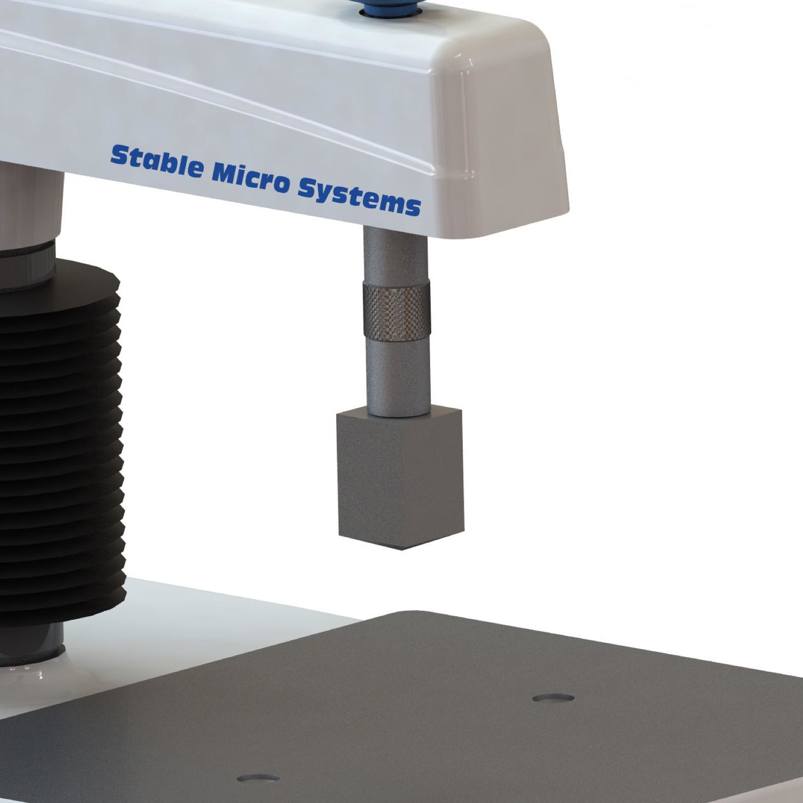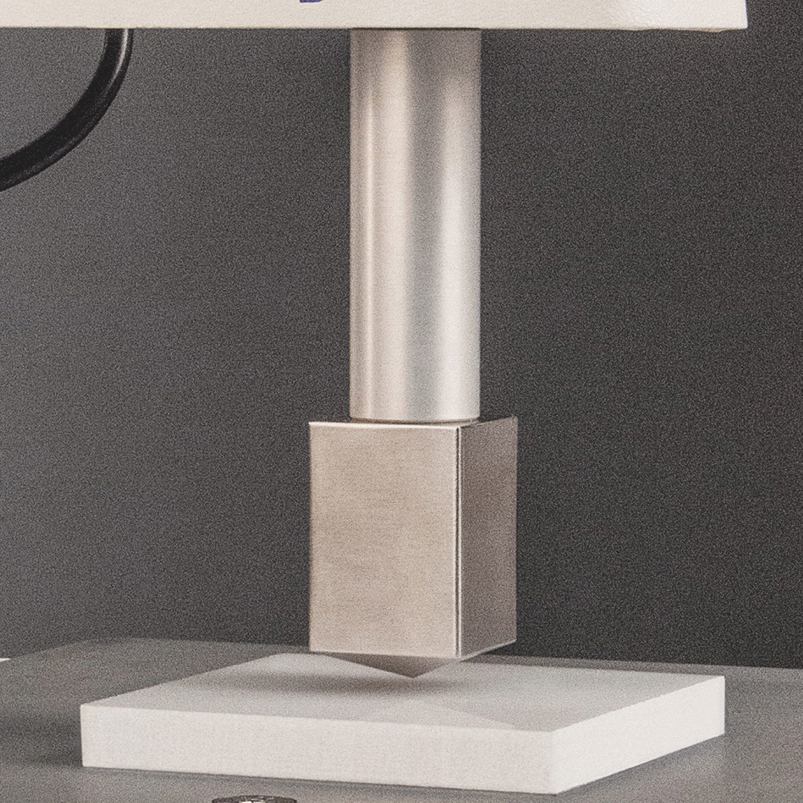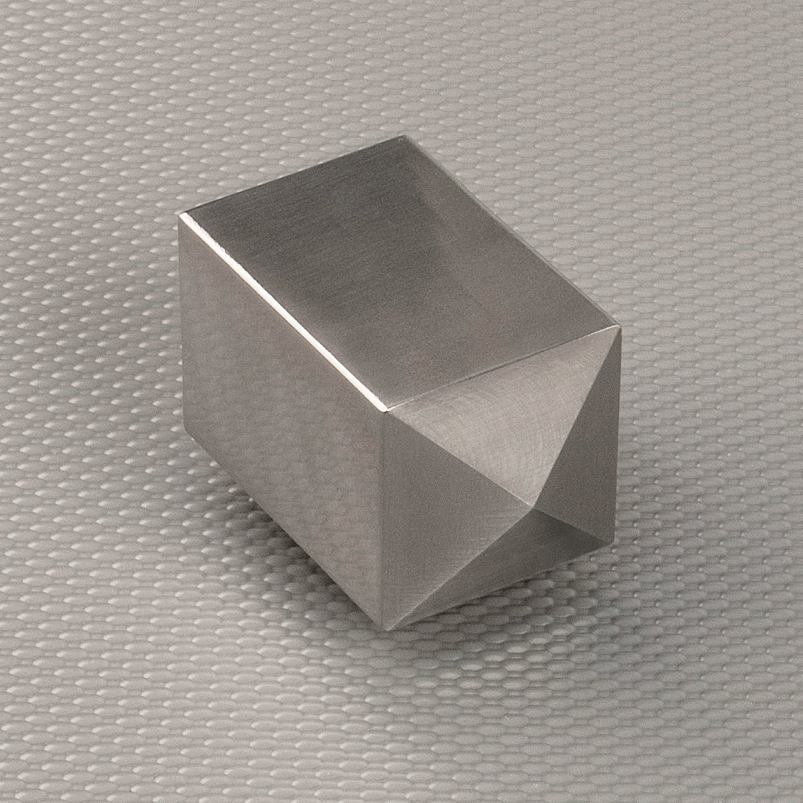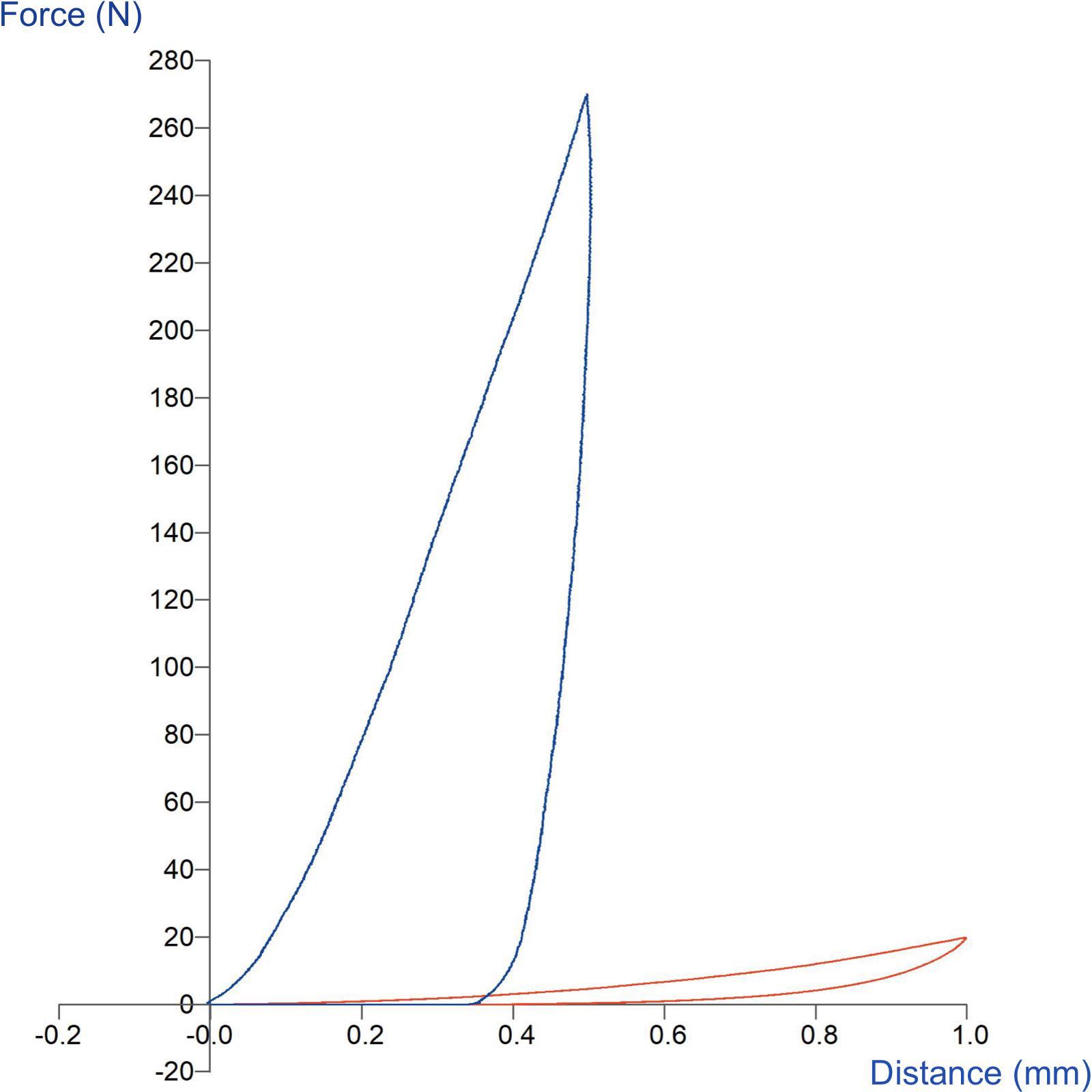Product overview
This stainless steel Vickers indenter is designed for fast and repeatable hardness testing of soft materials, such as those often used in the food, pharmaceutical and personal care industries. Vickers testing has been a very widely-used technique for many materials for decades due to simple data analysis and test preparation. Many applications demand a tip made from a very hard material such as diamond or sapphire, as the indenter must be significantly harder than the material under investigation. However, stainless steel is suitable for testing many softer materials such as tablets, soap, fruit and vegetables, cheese, chocolate and some polymers.
Traditionally, Vickers hardness is calculated by inputting the indentation diagonals into a standard formula. However, instrumented indentation on a Texture Analyser allows automatic hardness analysis without the use of a microscope. It also enables other parameters such as stress relaxation and elastic-plastic energy ratios to be calculated.
This stainless steel Vickers indenter is designed for fast and repeatable hardness testing of soft materials, such as those often used in the food, pharmaceutical and personal care industries.
Ideal sample form
Solid material
Benefits and limitations
- Versatility: Suitable for all hardness ranges, from very soft to very hard.
- Accuracy: The pyramid shape allows for a clearer impression, resulting in more accurate measurements.
- Non-destructive: Only a tiny impression is made, which is often acceptable in non-destructive testing scenarios
- Surface preparation: The material's surface needs to be well-prepared (polished) to ensure accurate results.
- Not suitable for rough surfaces: Surface irregularities can affect the measurement, so rough or textured surfaces might not be suitable without preparation.
Technical information
Installation
Full installation instructions are provided within the Education Zone of the latest Exponent/Connect software version and on the technical information sheet accompanying this product.
Chemical compatibility
Stable Micro Systems probes and attachments are commonly made from four materials: anodised aluminium (AA6082 T6), stainless steel (316 T), Delrin (acetyl copolymer) and Perspex (polycarbonate).
In general use, probes and attachments made from these materials will be suitable for testing food products and inert non-food materials.
The four materials listed above are not universally resistant to all types of chemicals and as such the compatibility of the probe/attachment material with the product (to be tested) must be established to prevent damage to the probes and attachments. If the compatibility of the product with the probe is unknown to the customer then the chemical information about the product (Material Safety Data Sheet or Product Data Sheet) should be submitted to Stable Micro Systems. Stable Micro Systems will then assess the suitability of the probe/attachment material for use with the product and advise accordingly. If this advice is not sought then Stable Micro Systems will not accept liability for probes/attachments damaged by chemical attack from the product being tested.
Cleaning and maintenance
All probes and attachments may be cleaned in warm (or hand hot) water using a mild detergent. A soft brush may be used but abrasive cleaning aids should be avoided. Stable Micro Systems products should not be microwaved or cleaned in a dishwasher.
Screw threads should be lightly lubricated after drying using a light lubricant, e.g. petroleum jelly, mineral oil. This will aid the fitting and unscrewing of the item. Each component of a probe or attachment should be wrapped separately when stored, to avoid scratching or chipping. This will safeguard against any unnecessary damage to the accessory.




